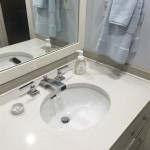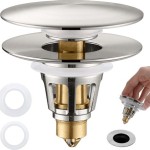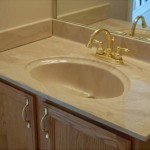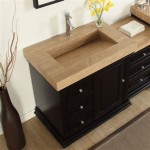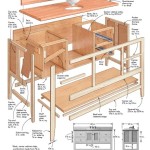How to Clean Black Spots Off Bathroom Ceiling
Black spots on a bathroom ceiling are a common household issue, primarily caused by mold and mildew growth. These fungi thrive in the humid environment of bathrooms, especially where ventilation is poor. Addressing this problem is crucial not only for aesthetic reasons but also for maintaining good indoor air quality and preventing potential health concerns related to mold exposure. The following guide provides detailed steps and effective methods for safely and thoroughly cleaning black spots from a bathroom ceiling.
Before commencing the cleaning process, it is essential to understand the nature of the problem. Mold and mildew are microorganisms that require moisture and organic matter to flourish. Bathrooms, with their fluctuating temperatures and humidity levels from showers and baths, provide an ideal breeding ground. Inadequate ventilation exacerbates the issue by trapping moisture and humidity, allowing mold spores to settle and multiply on surfaces like the ceiling.
Identifying the type of growth present is important, though often difficult without professional assessment. Mold typically appears as fuzzy or slimy patches, ranging in color from black and green to brown and white. Mildew, on the other hand, often looks like a powdery or downy coating, usually white or gray. Regardless of the specific type, it is generally best to treat all black spots on a bathroom ceiling as potential mold and take appropriate safety precautions.
Safety Precautions
Prior to any cleaning activity, taking the necessary safety precautions is paramount. Mold exposure can trigger allergic reactions, respiratory problems, and other health issues in sensitive individuals. Protect yourself by wearing appropriate personal protective equipment (PPE), including:
- A respirator or N-95 mask to prevent inhalation of mold spores and cleaning solutions.
- Eye protection, such as goggles, to shield your eyes from splashes and irritants.
- Gloves, preferably rubber or nitrile, to protect your skin from direct contact with mold and cleaning agents.
Furthermore, ensure adequate ventilation in the bathroom by opening windows and/or using an exhaust fan. This will help to remove airborne mold spores and reduce the concentration of cleaning fumes.
If the mold infestation is extensive (covering a large area or penetrating deeply into the ceiling material), it is advisable to consult with a professional mold remediation service. Attempting to clean a large or severe mold problem yourself may not be effective and could potentially disperse mold spores throughout your home.
Cleaning Solutions and Methods
Several effective cleaning solutions can be used to remove black spots from a bathroom ceiling. The best choice depends on the severity of the mold growth and the type of ceiling material. Always test the cleaning solution in an inconspicuous area first to ensure it does not damage or discolor the ceiling.
Bleach Solution: A diluted bleach solution is a common and effective option for killing mold. Mix one part bleach with ten parts water in a spray bottle. Spray the solution liberally onto the affected areas of the ceiling, ensuring thorough coverage. Allow the solution to sit for 10-15 minutes to allow it to penetrate and kill the mold. After the dwell time, use a sponge or soft cloth to gently wipe away the mold. Rinse the area with clean water to remove any remaining bleach residue.
Vinegar: White vinegar is a natural and less harsh alternative to bleach. It is effective at killing many types of mold and is generally safe for most surfaces. Pour undiluted white vinegar into a spray bottle and apply it directly to the moldy areas of the ceiling. Let it sit for at least one hour before wiping it clean with a damp cloth. Vinegar has a strong odor, so ensure adequate ventilation while using it.
Hydrogen Peroxide: Hydrogen peroxide is another effective and environmentally friendly mold killer. It is less likely to discolor surfaces compared to bleach. Pour a 3% hydrogen peroxide solution into a spray bottle and spray it onto the moldy areas. Allow it to sit for 10-15 minutes before scrubbing gently with a sponge or cloth. Rinse with clean water.
Baking Soda: Baking soda is a mild abrasive cleaner that can help to remove mold and absorb moisture. Mix baking soda with water to create a paste. Apply the paste to the moldy areas of the ceiling and let it dry completely. Once dry, scrub the area with a brush or sponge and rinse with clean water.
Commercial Mold Removers: Numerous commercial mold and mildew removers are available at hardware stores and home improvement centers. Always follow the manufacturer's instructions carefully when using these products. Ensure the product is suitable for use on the type of ceiling material in your bathroom. Provide adequate ventilation and wear appropriate PPE as recommended by the product label.
Irrespective of the chosen cleaning solution, the application method is crucial for effective mold removal. When spraying the ceiling, hold the nozzle a reasonable distance away to prevent dripping and ensure even coverage. Avoid oversaturating the ceiling material, as this can cause damage or promote further mold growth. Use a gentle scrubbing motion when cleaning, especially on textured ceilings, to avoid damaging the surface. Dispose of sponges, cloths, and brushes used for mold cleaning in a sealed plastic bag to prevent the spread of mold spores.
Preventative Measures
After successfully cleaning the black spots from the bathroom ceiling, it is essential to take steps to prevent future mold and mildew growth. Focusing on moisture control and improving ventilation are the primary strategies for long-term prevention.
Improve Ventilation: Proper ventilation is crucial for preventing moisture buildup in the bathroom. Always run the exhaust fan during and after showers and baths for at least 20-30 minutes to remove excess humidity. If your bathroom does not have an exhaust fan, consider installing one. Open windows whenever possible to allow fresh air to circulate.
Control Moisture: Address any sources of moisture in the bathroom, such as leaky faucets, showerheads, or pipes. Repair leaks promptly to prevent water from accumulating. Wipe down wet surfaces, such as shower walls and floors, after each use to reduce humidity levels.
Regular Cleaning: Incorporate regular cleaning into your bathroom maintenance routine to prevent mold and mildew from taking hold. Clean shower walls, floors, and the ceiling on a weekly basis using a mold-killing cleaner or a solution of vinegar and water. Pay particular attention to areas prone to moisture accumulation, such as corners and grout lines.
Use Mold-Resistant Paint: When repainting the bathroom ceiling, consider using a mold-resistant paint containing mildewcides. These paints are formulated to inhibit mold growth and provide long-lasting protection. Ensure the ceiling is completely dry before applying the paint.
Maintain Low Humidity: Using a dehumidifier can assist in maintaining a lower humidity level in the bathroom, especially during periods of high humidity. Aim for a humidity level below 50% to discourage mold growth. Monitor humidity levels with a hygrometer.
Proper Air Circulation: Avoid placing items that block air circulation around the bathroom, such as large stacks of towels or furniture. Ensure there is adequate space for air to flow freely around all surfaces to promote drying.
By following these steps, you can effectively and safely clean black spots from your bathroom ceiling and prevent future mold and mildew growth, creating a healthier and more pleasant environment.
Remember that severe mold infestations may require professional intervention. If you are unsure about the extent of the problem or if you have health concerns related to mold exposure, consult with a qualified mold remediation specialist or a healthcare professional.

How To Clean Black Spots In The Bathroom Family Handyman

How To Remove Black Mold From A Bathroom Ceiling

Black Spots On The Bathroom Ceiling Flood Water Damage Honolulu Oahu Hawaii Md Restoration

Cleaning Mold From Bathroom Ceilings Like A Pro Lovetoknow

Bathroom Ceiling Mold Removal When To Clean Call Branch Environmental

How To Get Rid Of Mold On Your Bathroom Ceiling Aqa

Mold On Bathroom Ceiling How To Clean Off

Mold On Bathroom Ceiling How To Clean Off

Don T Let Mould Take Over How To Remove It From Your Ceiling

Ceiling Mold Growth Learn The Cause And How To Prevent It Environix
